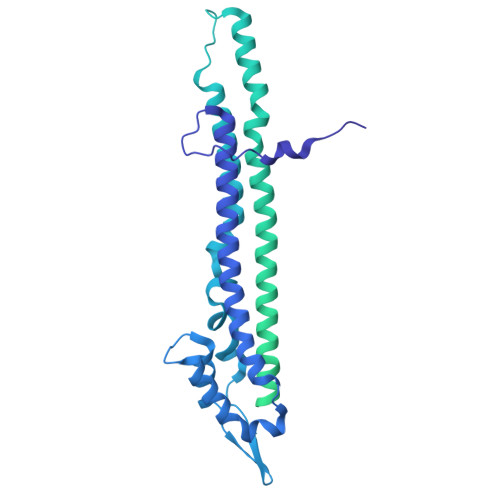Modularity of Zorya defense systems during phage inhibition.
Mariano, G., Deme, J.C., Readshaw, J.J., Grobbelaar, M.J., Keenan, M., El-Masri, Y., Bamford, L., Songra, S., Blower, T.R., Palmer, T., Lea, S.M.(2025) Nat Commun 16: 2344-2344
- PubMed: 40057510
- DOI: https://doi.org/10.1038/s41467-025-57397-2
- Primary Citation of Related Structures:
8VVI, 8VVN - PubMed Abstract:
Bacteria have evolved an extraordinary diversity of defense systems against bacteriophage (phage) predation. However, the molecular mechanisms underlying these anti-phage systems often remain elusive. Here, we provide mechanistic and structural insights into Zorya phage defense systems. Using cryo-EM structural analyses, we show that the Zorya type I and II core components, ZorA and ZorB, assemble in a 5:2 complex that is similar to inner-membrane ion-driven, rotary motors that power flagellar rotation, type 9 secretion, gliding and the Ton nutrient uptake systems. The ZorAB complex has an elongated cytoplasmic tail assembled by bundling the C-termini of the five ZorA subunits. Mutagenesis demonstrates that peptidoglycan binding by the periplasmic domains of ZorB, the structured cytoplasmic tail of ZorA, and ion flow through the motor is important for function in both type I and II systems. Furthermore, we identify ZorE as the effector module of the Zorya II system, possessing nickase activity. Our work reveals the molecular basis of the activity of Zorya systems and highlights the ZorE nickase as crucial for population-wide immunity in the type II system.
- Department of Microbial Sciences, Faculty of Health and Medical Sciences, University of Glasgow, Guildford, UK. giusy.mariano@glasgow.ac.uk.
Organizational Affiliation:


















